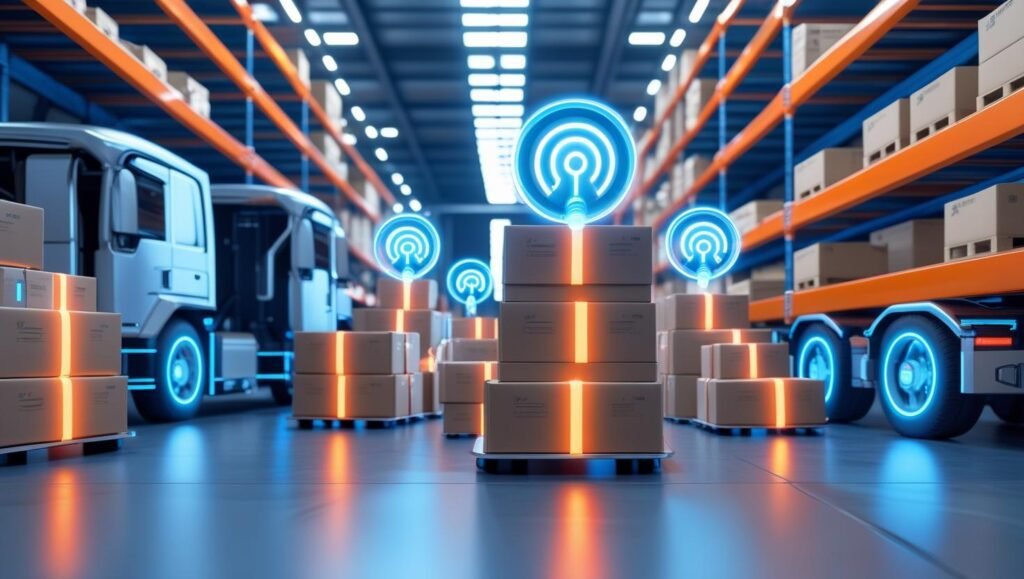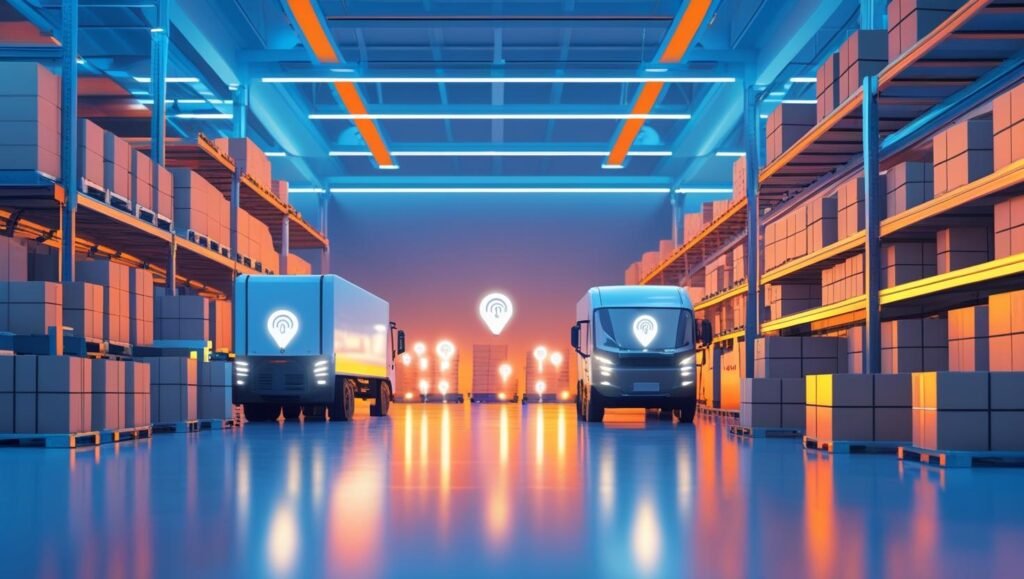Supply Chain IoT: Streamline Logistics Now

Imagine a world where your packages arrive faster, products never run out of stock, and businesses save money. That’s the power of Supply Chain IoT! By connecting devices and using smart tech, companies can track goods, cut delays, and make logistics easier. In this article, we’ll explore how IoT streamlines supply chains, solves common problems, and helps businesses thrive. Let’s dive in and see how this game-changing technology works!
What Is Supply Chain IoT?
Supply Chain IoT, or the Internet of Things in supply chains, uses connected devices to monitor and manage logistics. Think of it like giving your supply chain a brain! Sensors, trackers, and software collect data to help businesses know where products are, how they’re stored, and when they’ll arrive.
These devices talk to each other in real time. For example, a sensor on a truck can alert a warehouse if a delivery is late. This makes everything faster and smarter.
Why Does It Matter?
Logistics can be messy. Lost shipments, spoiled goods, or delays frustrate customers and cost money. Supply Chain IoT fixes these issues by giving businesses better control. It’s like having eyes on every box, truck, and shelf!

Key Benefits of Supply Chain IoT
Let’s break down how Supply Chain IoT makes logistics smoother. Here are the top ways it helps businesses and customers.
Real-Time Tracking
IoT devices let you see where products are at any moment. A GPS tracker on a truck shows its exact location, so you know if it’s on time. This means fewer surprises and happier customers.
Better Inventory Management
Running out of stock is a nightmare. IoT sensors in warehouses monitor inventory levels. When supplies get low, the system can automatically reorder. This keeps shelves full without extra work.
Fewer Errors
Manual tracking leads to mistakes. IoT automates data collection, so there’s less chance of human error. For example, a scanner can instantly log a shipment’s arrival, saving time and reducing mix-ups.
Cost Savings
IoT helps cut waste. By optimizing routes, trucks use less fuel. By monitoring storage conditions, companies avoid spoiled goods. These savings add up fast!
Improved Customer Trust
When you know exactly where a package is, you can share updates with customers. This transparency builds trust and keeps people coming back.
How Supply Chain IoT Works in Real Life
Let’s look at how Supply Chain IoT solves problems in different parts of logistics. These examples show its power in action.
Shipping and Transportation
Trucks, ships, and planes carry goods across the world. IoT trackers on vehicles provide updates on location, speed, and even road conditions. If a storm delays a shipment, the system can reroute the truck to save time.
Warehousing
Warehouses are busy places. IoT sensors monitor temperature, humidity, and inventory. For example, if a fridge storing medicine gets too warm, an alert goes off to prevent spoilage.
Last-Mile Delivery
The final step—getting products to customers—is tricky. IoT helps by optimizing delivery routes. Drivers get real-time traffic updates, so packages arrive faster.
Table: IoT Solutions for Common Supply Chain Problems
| Problem | IoT Solution | Benefit |
|---|---|---|
| Lost shipments | GPS trackers | Real-time location updates |
| Spoiled goods | Temperature sensors | Prevents waste |
| Stockouts | Inventory sensors | Automatic reordering |
| Delivery delays | Route optimization software | Faster deliveries |
Challenges of Using Supply Chain IoT
While Supply Chain IoT is amazing, it’s not perfect. Let’s talk about some hurdles and how businesses can overcome them.
High Setup Costs
Installing IoT devices can be expensive. Sensors, software, and training add up. But the savings from fewer delays and less waste often make it worth it over time.
Data Overload
IoT generates tons of data. Sorting through it can feel overwhelming. Smart software with easy dashboards helps managers focus on what matters.
Security Risks
Connected devices can be hacked. To stay safe, businesses need strong passwords, encryption, and regular software updates.
Getting Everyone On Board
Workers might resist new tech. Training and clear communication help teams see how IoT makes their jobs easier, not harder.
Steps to Start Using Supply Chain IoT
Ready to streamline your logistics with Supply Chain IoT? Here’s a simple plan to get started.
- Identify Your Needs: What problems do you want to solve? Lost packages? Slow deliveries? Focus on one area first.
- Choose the Right Devices: Pick sensors or trackers that fit your goals. For example, use GPS for shipping or temperature sensors for storage.
- Start Small: Test IoT in one part of your supply chain, like a single warehouse. This helps you learn without big risks.
- Train Your Team: Show workers how to use the new tools. Make it fun and simple!
- Analyze and Grow: Check the data to see what’s working. Then expand IoT to other areas.
The Future of Supply Chain IoT
Supply Chain IoT is just getting started. New tech like 5G networks will make devices faster and more reliable. Artificial intelligence will analyze data better, predicting problems before they happen. For example, AI could warn about a truck breakdown before it stops.
Sustainability is another big trend. IoT can help companies reduce waste and energy use, making supply chains greener. Customers love eco-friendly businesses, so this is a win-win.
Conclusion
Supply Chain IoT is a game-changer for logistics. It helps businesses track goods, save money, and keep customers happy. By using smart devices, you can solve problems like delays, stockouts, and errors. Sure, there are challenges like costs and data management, but the benefits are huge. Start small, train your team, and watch your supply chain become smoother than ever. Ready to transform your logistics? The future is here, and it’s connected!
FAQs About Supply Chain IoT
What is Supply Chain IoT?
It’s using connected devices like sensors and trackers to monitor and improve logistics, from shipping to storage.
How does IoT save money in supply chains?
It cuts waste by optimizing routes, preventing spoilage, and automating tasks, which lowers costs.
Is Supply Chain IoT safe?
It can be safe with strong security like encryption and regular updates to protect against hacks.
Can small businesses use Supply Chain IoT?
Yes! Start with affordable devices and focus on one problem, like tracking deliveries, to see results.
Read more: Energy IoT: Smart Grids for a Greener Future – IoT Insights Hub




